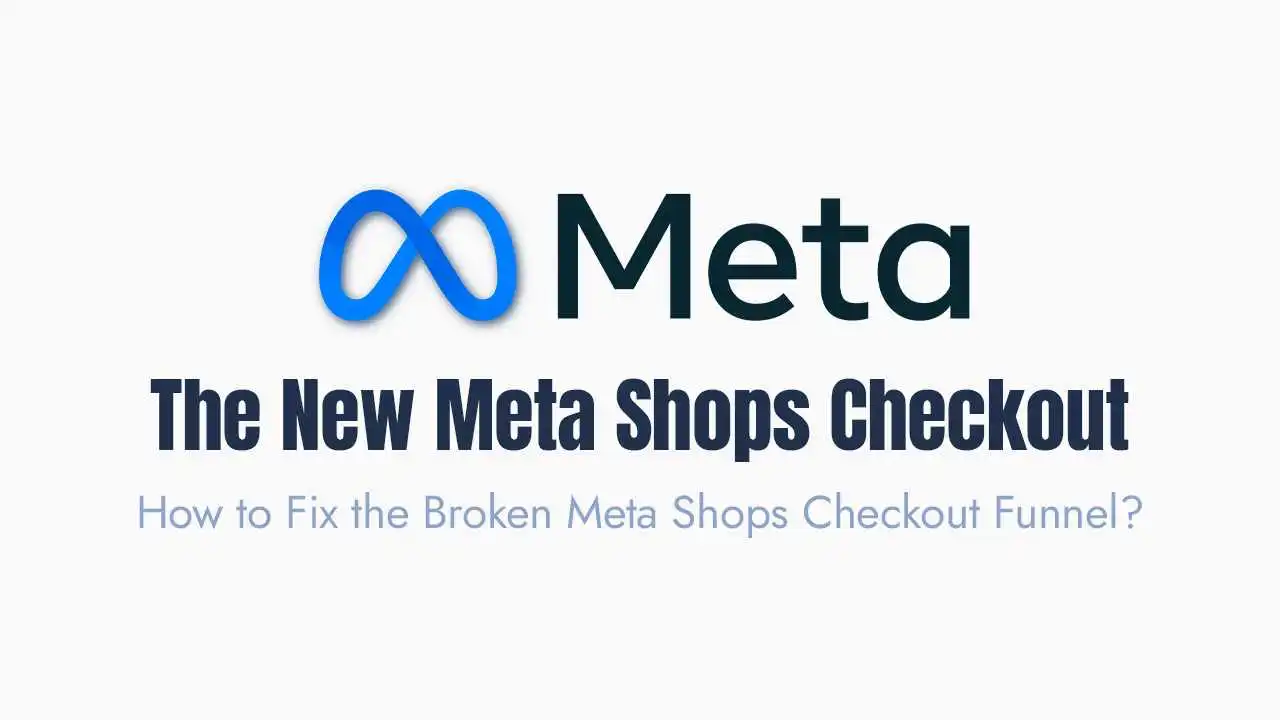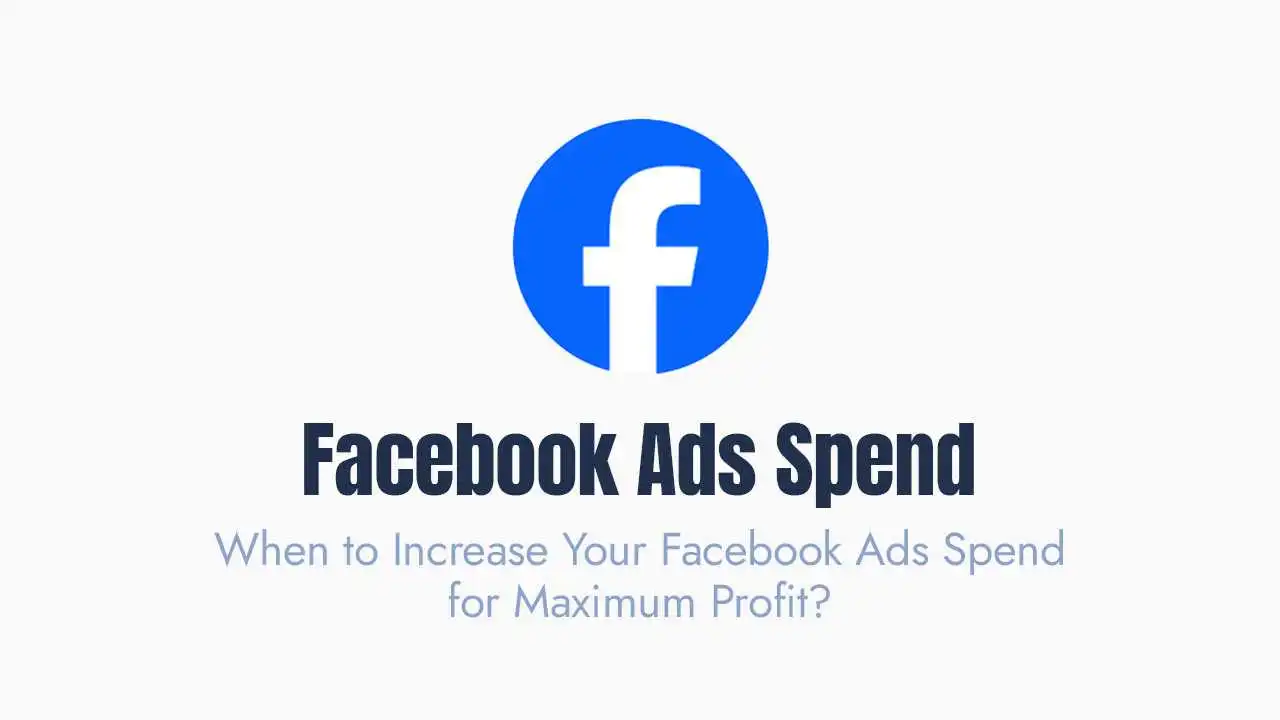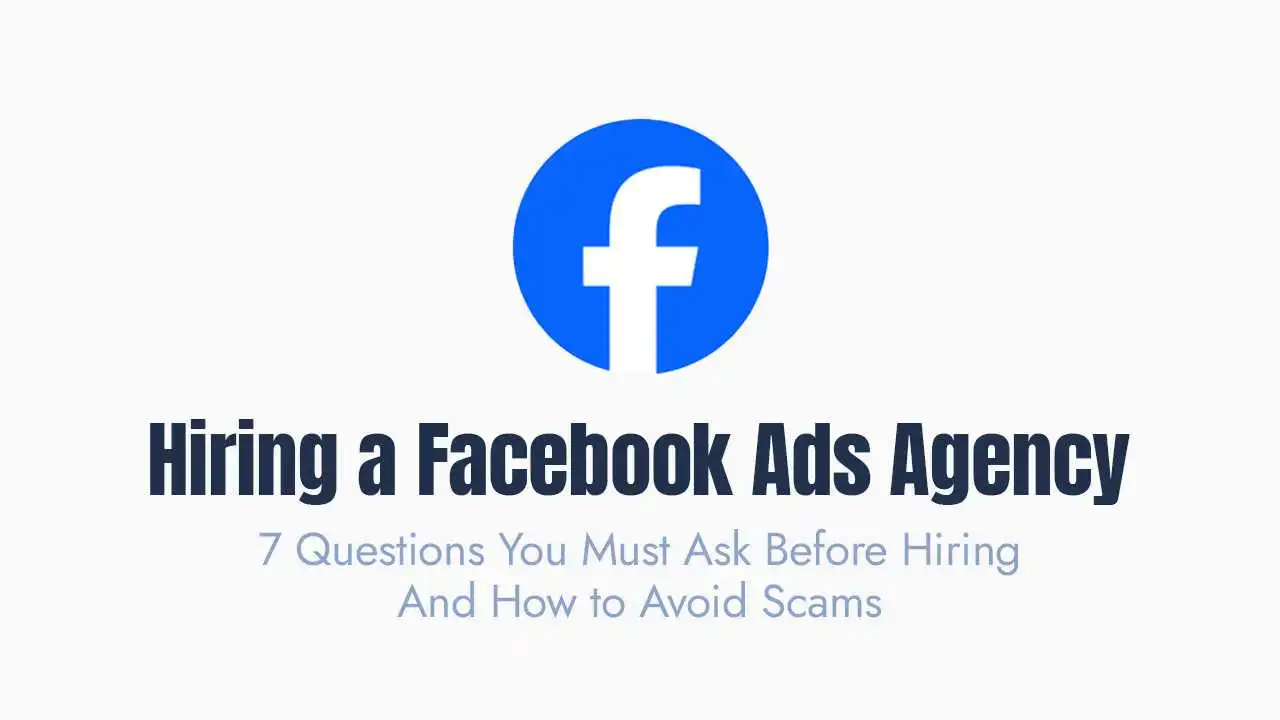For small businesses leveraging Meta Shops, a significant change has just rolled out in the US that could be quietly costing you sales.
Meta is actively phasing out its in-app checkout feature, meaning customers who click on your products within Instagram or Facebook Shops are no longer completing their purchase directly on the platform.
Instead, all US customers are now being redirected to your website to complete their purchase. While this might sound like a minor tweak, the default way this redirect happens is a subtle yet powerful secret conversion killer that could be sabotaging your sales funnel without you even realizing it.
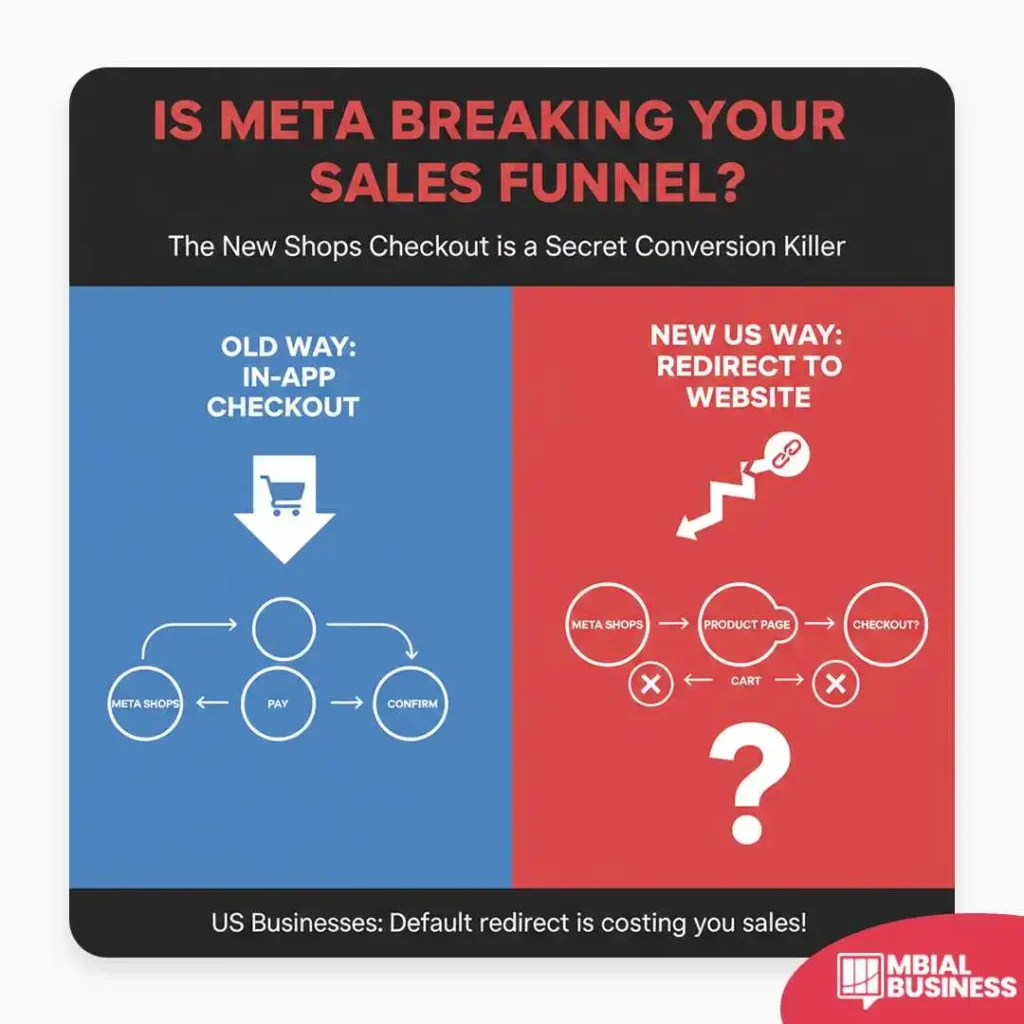
The Problem: An Extra Step, A Lost Sale
Here’s the critical issue: when a customer clicks on your product in Meta Shops, the default behavior isn’t to send them straight to a pre-filled cart on your website. Instead, it sends them to the product page on your website.
Imagine this: a customer sees your product on Instagram, loves it, clicks “Buy Now,” and expects to land directly at checkout. But instead, they find themselves back on the product page. They now have to:
Add the item to their cart again.
Navigate to the cart.
Proceed to checkout.
Each of these extra steps is a moment where friction is introduced. And in the fast-paced world of online shopping, friction is the enemy of conversions.
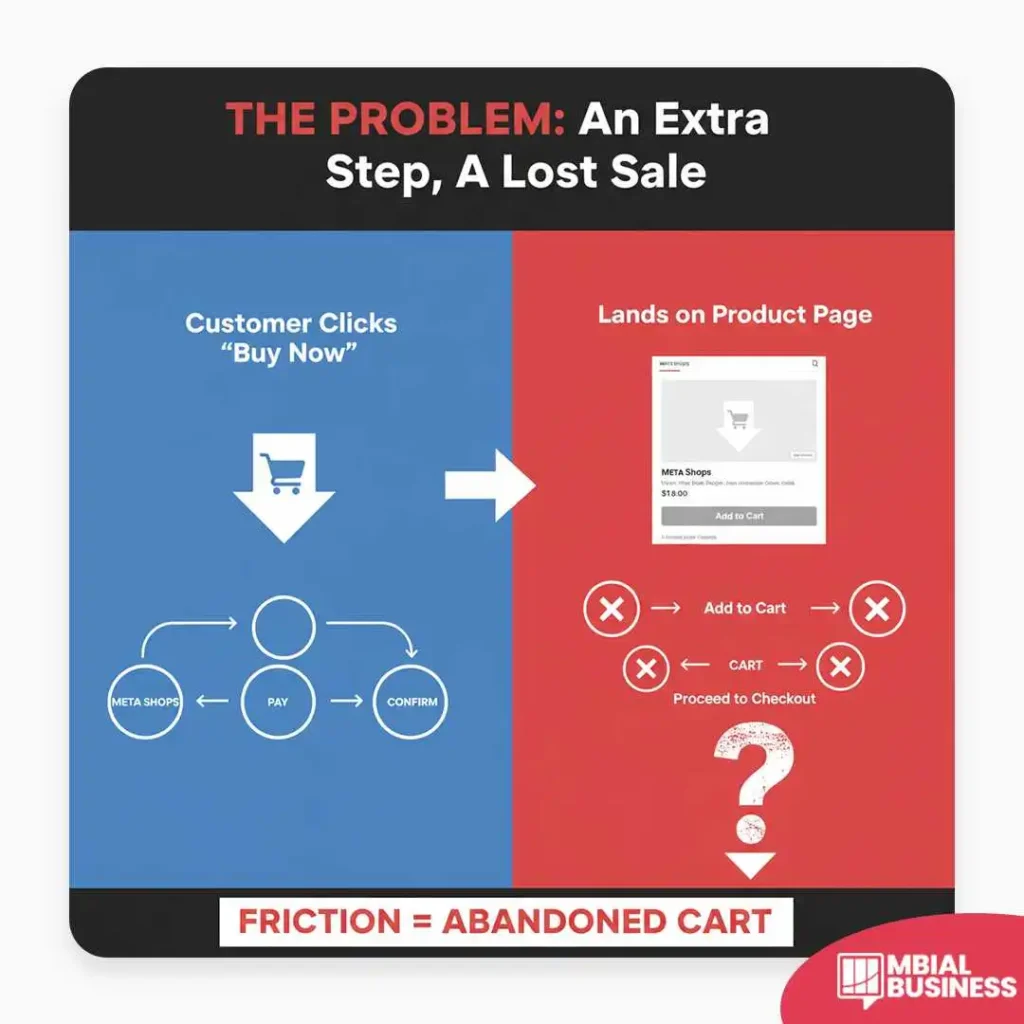
Abandoned Carts and Missed Opportunities:
This seemingly small change has a huge impact on your bottom line. Why is this default redirect so problematic?
Higher Abandoned Carts:
Every additional click or page load gives a customer a chance to reconsider, get distracted, or simply get frustrated and leave. Abandoned carts are already a major challenge for e-commerce, and this adds unnecessary fuel to the fire.
Lost Sales:
A customer who was ready to buy moments ago is now forced to repeat steps. Many won’t bother. They’ll simply close the tab, and that sale is gone forever.
Broken Expectations:
Customers expect a smooth, streamlined buying journey. When they click a “Buy Now” button, they anticipate a direct path to purchase, not a detour.
In essence, Meta‘s default setup is creating a leaky sales funnel right when your customers are most motivated to buy.
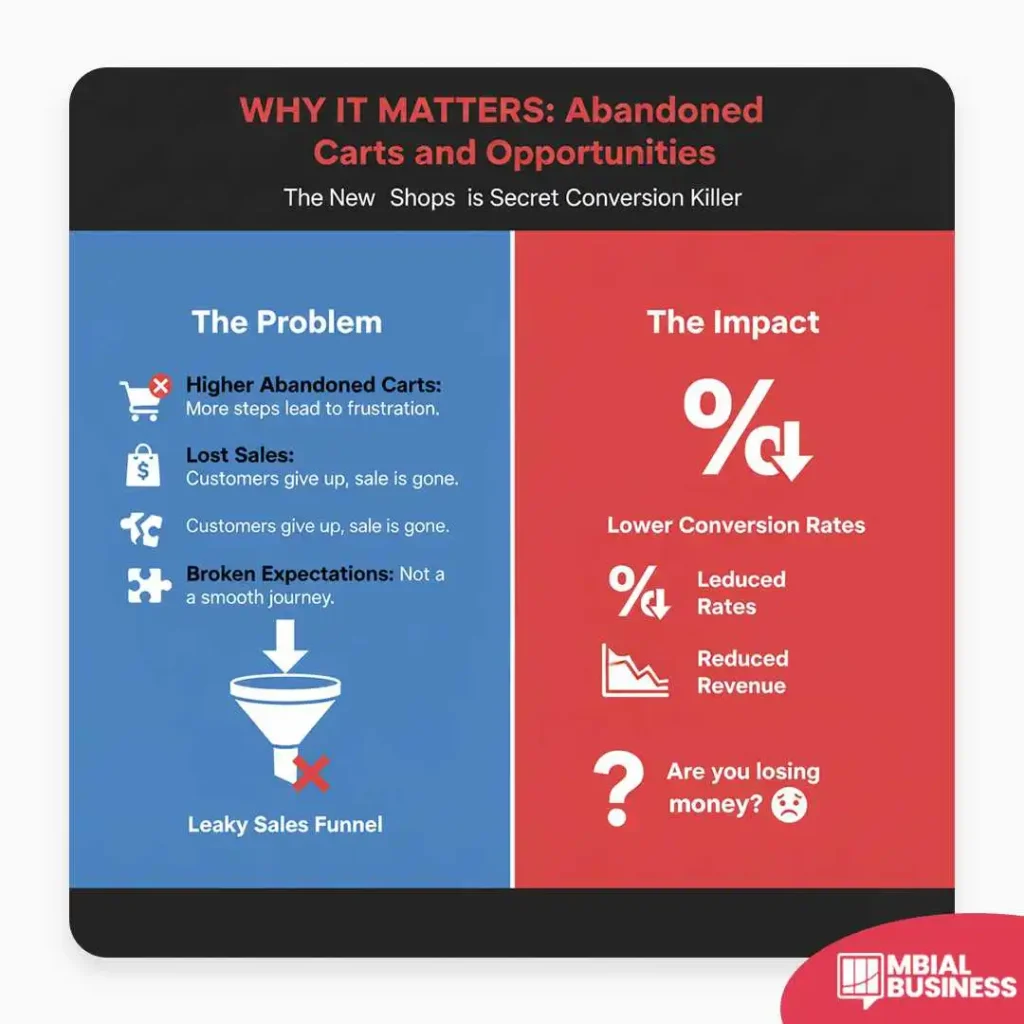
Seamless Redirect to a Pre-Filled Cart:
Thankfully, there’s a straightforward technical solution to this “secret conversion killer.”
By installing a small, custom script on your website, you can override Meta’s default behavior. This script ensures that when a customer clicks on your product in Meta Shops, they are redirected directly to a pre-filled cart on your website’s checkout page.
This means:
Customer clicks “Buy Now” in Meta Shops.
They land directly on your website’s secure checkout page, with the item already in their cart.
They simply fill in their payment and shipping details and complete the purchase.
This simple fix eliminates the friction, maintains a flawless customer experience, and gets your customers to the finish line with minimal effort.
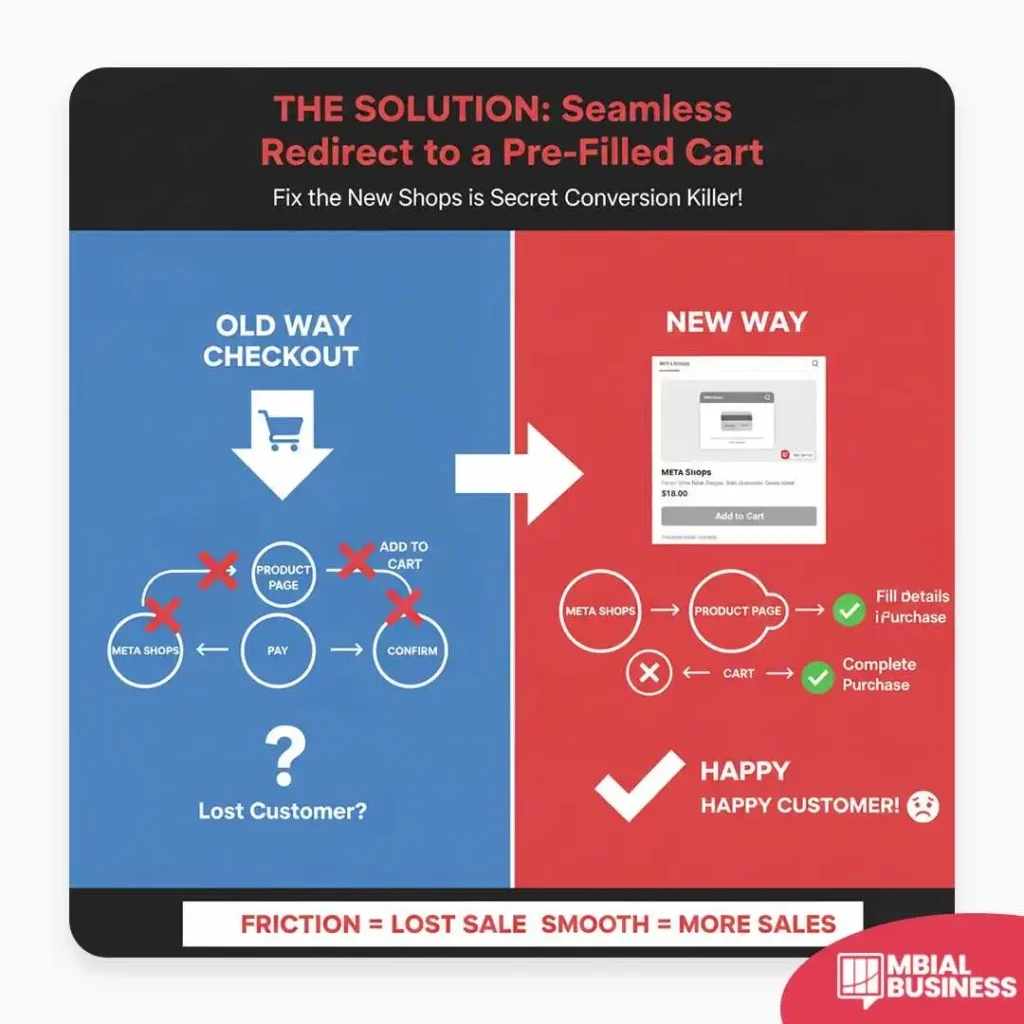
Gain a Competitive Edge:
While this change might initially seem like a headache, it’s actually a significant opportunity for your business to stand out.
Many small businesses will either be unaware of this default behavior or simply accept it, inadvertently losing sales. By being proactive and implementing this technical solution, you can:
Maintain a Superior Customer Experience:
Your customers will enjoy a smoother, more intuitive buying process, reinforcing trust and encouraging repeat purchases.
Boost Conversion Rates:
By removing unnecessary steps, you’ll see more customers complete their purchase, turning those interested clicks into actual sales.
Outperform Competitors:
While others are struggling with increased cart abandonment from Meta Shops traffic, your optimized funnel will be converting at a higher rate.
This isn’t just about fixing a problem; it’s about optimizing a critical sales channel and gaining a valuable competitive advantage.
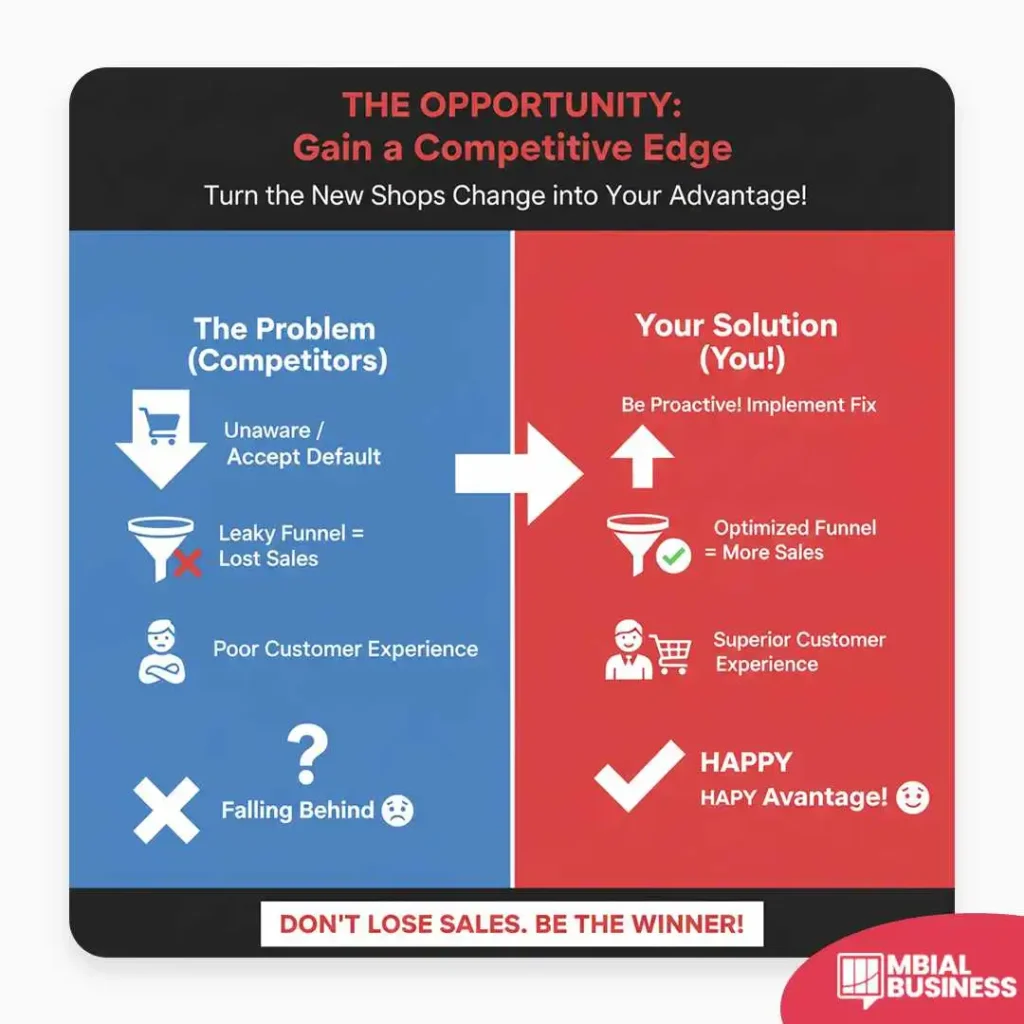
Don't Let Lost Sales Be Your Secret!
Are you ready to ensure your Meta Shops traffic is converting as effectively as possible? Don’t let a subtle technicality kill your sales.
Contact us today to learn more about implementing this essential fix and turning those Meta Shops clicks into completed purchases!
FAQs: How to Hide Your Followers on Instagram
1. What exactly is the "in-app checkout" feature that Meta is phasing out?
The in-app checkout feature, previously available to US businesses using Meta Shops, allowed customers browsing products on Facebook or Instagram to complete their entire purchase—from adding items to payment—directly within the Meta app without ever leaving the platform. This created a highly seamless and fast buying experience, where the customer simply clicked a product, proceeded to a Meta-hosted checkout screen, and confirmed their order. Its removal is the root cause of the current conversion issues, as Meta is now forcing a redirect to the retailer’s external website for all purchase completion steps, which introduces friction if not handled correctly.
2. Why is being redirected to the product page, instead of the cart, considered a "conversion killer"?
Being redirected to the product page on your website forces the customer to unnecessarily repeat several steps: they must re-add the item to the cart, navigate to the cart page, and then proceed to checkout. This process breaks the customer’s expectation of a direct, streamlined path to purchase after clicking “Buy Now” on Meta Shops. Each extra click introduces a moment of friction, distraction, or potential frustration, significantly increasing the likelihood that the customer will abandon the process altogether—a phenomenon that leads directly to higher abandoned cart rates and lost sales.
3. Does this change only affect businesses in the United States?
Yes, the article specifically notes that this change—the active phasing out of the in-app checkout feature and the mandatory redirect to an external website—has just rolled out in the US market. While Meta’s policies and features can evolve globally, the immediate and critical problem of the default redirect behavior, which sends customers to a product page instead of a pre-filled cart, is currently the primary concern for businesses selling through Meta Shops to US-based customers. Businesses in other regions may still have access to the in-app checkout or a different flow, but the general principle of optimizing external redirects remains vital for any sales channel.
4. What is the technical solution mentioned in the article, and how does it work?
The technical solution involves installing a small, custom script directly onto your website. This script acts as an override for Meta’s default redirect setting. Instead of accepting the standard behavior, which sends the Meta Shops traffic to a non-checkout-ready product page, the script intelligently intercepts the incoming click and ensures the customer is seamlessly directed to your website’s secure checkout page with the product already added to their cart. This fix effectively restores the near-one-click experience by eliminating the unnecessary “add to cart” and “view cart” steps, thereby drastically reducing friction and boosting conversion rates.
5. If Meta wants customers to complete the purchase on my website, why would they implement a system that makes me lose sales?
Meta’s move to phase out in-app checkout appears to be a broader strategic decision to streamline their platform offerings, but the resulting default redirect behavior—sending traffic to the product page—seems to overlook the real-world impact on sales funnel optimization. The platform’s primary goal is to drive traffic from their app to your external shop; however, the lack of an immediate, automatic, and pre-filled cart experience means the default setup prioritizes routing over conversion effectiveness. This oversight creates a technical problem that falls on the small business owner to solve by implementing the custom redirect script to ensure a smooth transition and maximize conversions.

